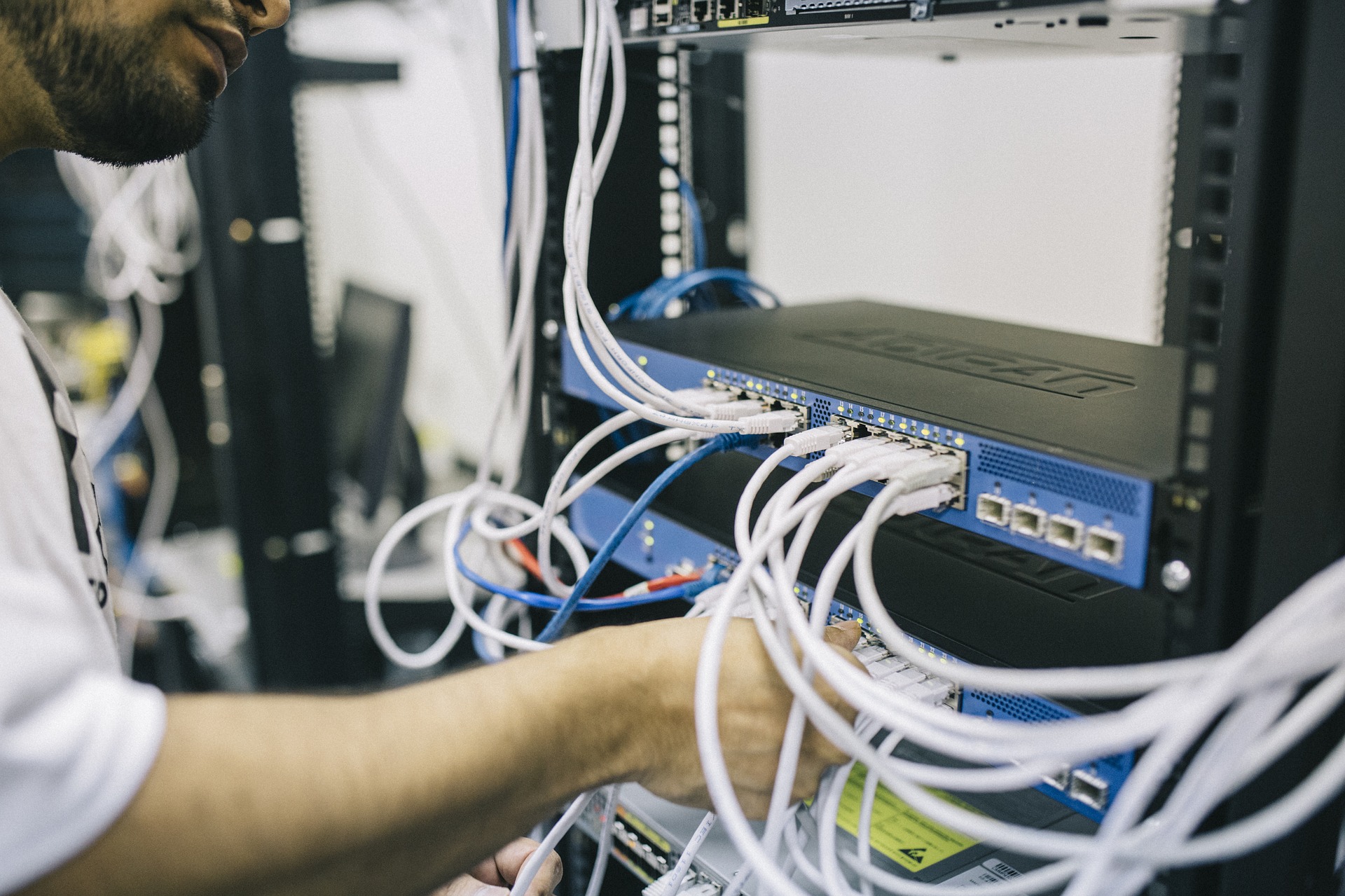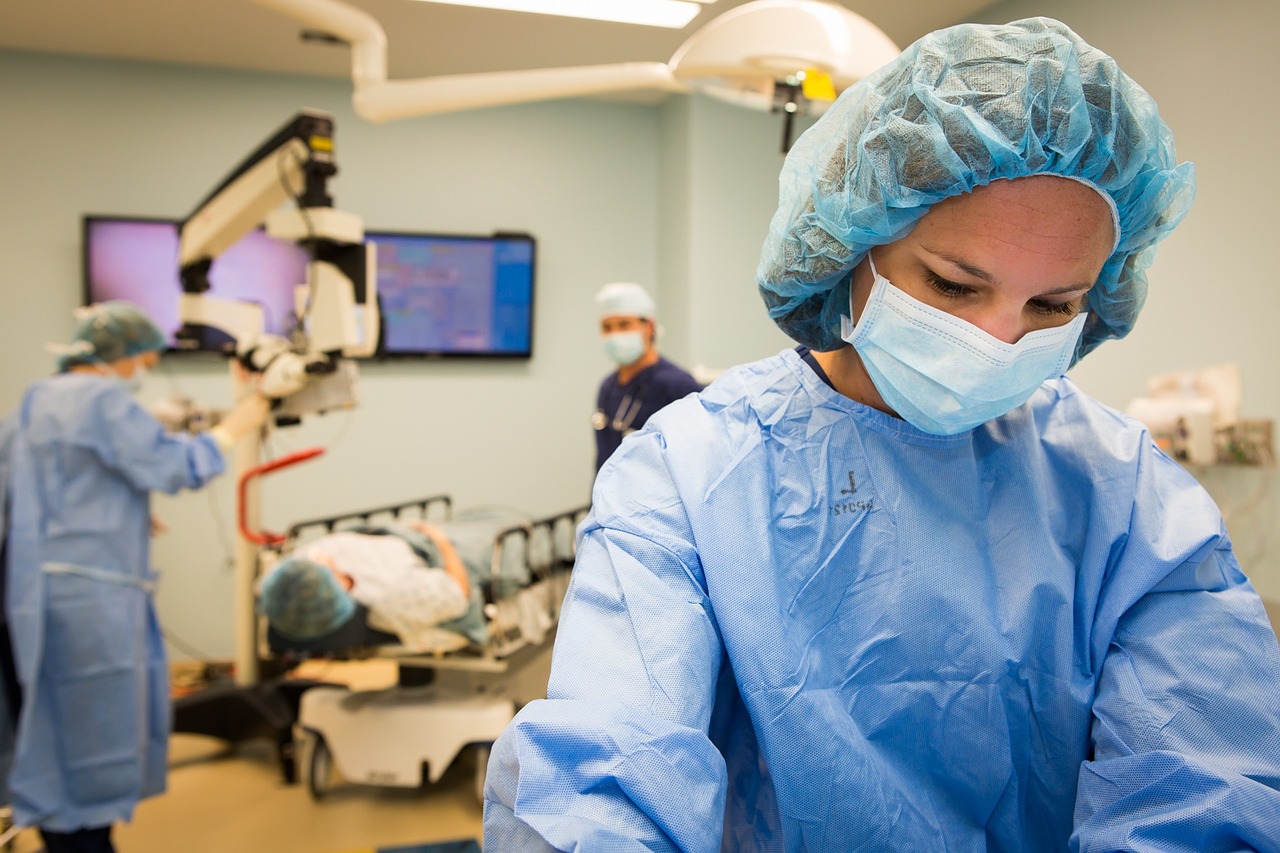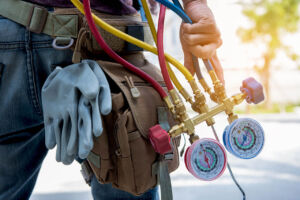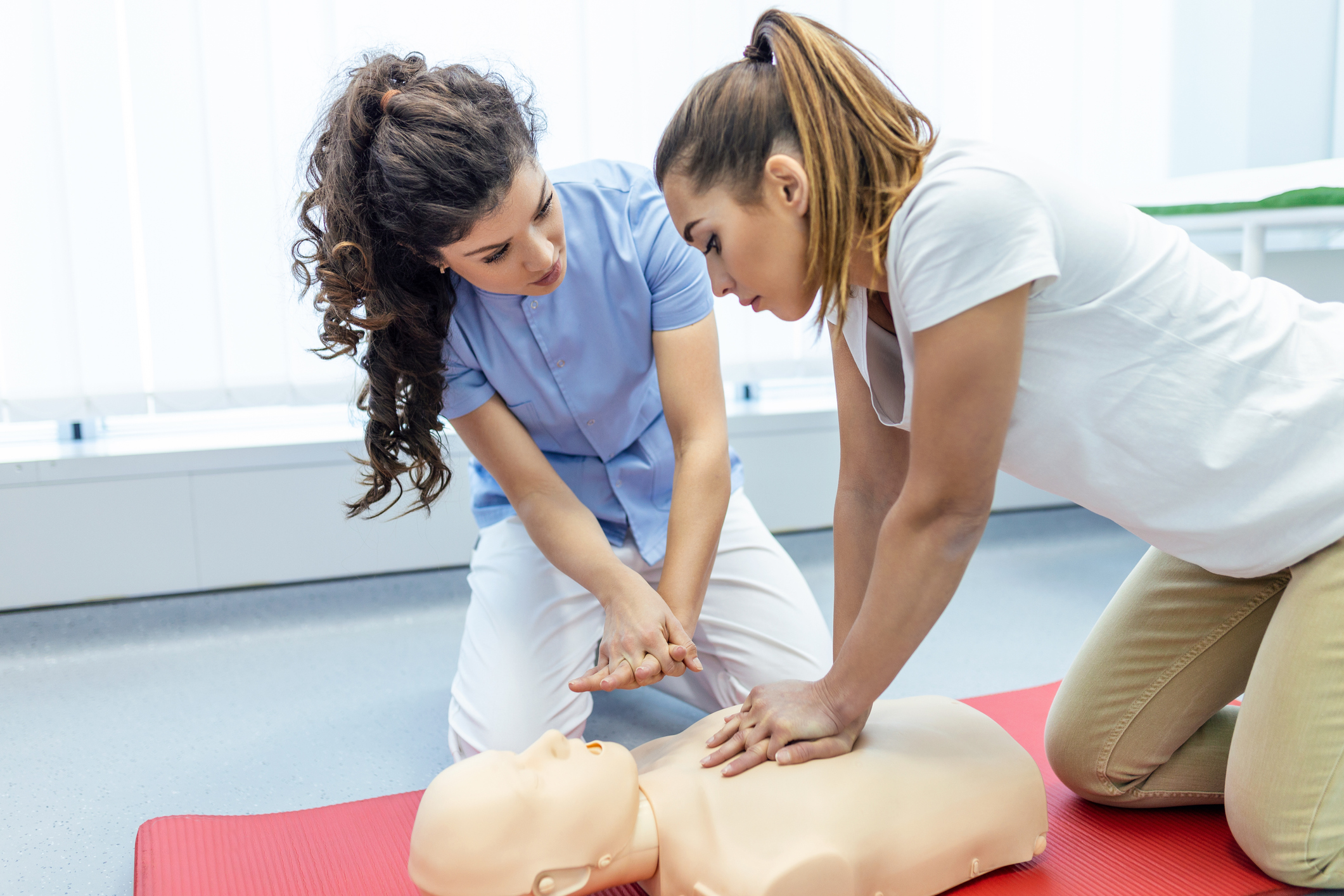Medical assistants manage clinical and administrative tasks in healthcare settings. But rarely do they make life-or-death decisions. Occasionally, however, a healthcare emergency requires quick action. Medical assistants never know when they may need to perform CPR.
Is it Important to Learn CPR?
According to the American Heart Association (AHA), people are 2-3 times more likely to survive a cardiac arrest if CPR is performed immediately. Medical assistants can contribute to better health outcomes by being prepared for cardiac and other emergencies in the workplace.
But CPR training goes far beyond the chest compressions that sustain circulation while someone’s heart isn’t beating. It also covers respiratory emergencies, such as choking, and how to use an automated external defibrillator, an electrical device that can restore a normal heart rhythm by delivering electric shocks (AED).
CPR is a valuable skill for medical assistants anywhere they work. When you’re employed in a healthcare setting, you’re surrounded by medically vulnerable people for whom experiencing a healthcare emergency is more likely. With training, you’ll be prepared to lead or assist during an unexpected medical event. For example:
In a Doctor’s Office
Medical assistants may be the only other healthcare professionals in an office setting at any given time. If a patient has a heart attack while waiting for an exam, a rapid emergency response could save their life.
Private practices also perform diagnostic testing with an above-average risk for a cardiac event, such as stress testing. If you work in a cardiology office, you may respond to or assist with more than your share of health crises.
At a Clinic
Working in a clinic exposes medical assistants to both patients and families. A child who needs a strep test, for example, may have a mom or dad in tow. But things can suddenly go awry if a sibling chokes on a small toy that obstructs their airway. Abdominal thrusts and back blow techniques for clearing foreign obstructions are included in CPR training.
CPR also touches upon respiratory failure, a problem for patients with lung disorders. In an urgent care setting, you may be the first person to notice that someone is having difficulty breathing
In a Hospital
Hospitals host the sickest patients, so medical emergencies are the rule, not the exception. Medical assistants, however, are less likely to play a leading role in the response. Still, working in an outpatient department, you may be the first to recognize the symptoms of crisis, helping to avoid a potentially fatal event.
CPR is also an important skill in any workplace. Not only does CPR training help medical assistants protect patients, but it could also help save a peer’s life. If everyone were CPR-certified, the AHA believes it could save many lives.
Learning CPR also boosts your professional growth as a medical assistant, demonstrating your commitment to patient care and emergency readiness. In a collaborative setting, those who are trained can guide those who aren’t while contributing to workplace preparedness policy-making that keeps everyone safer.
Finally, CPR training will also help you embrace emergency preparedness in your work and personal life. Once you realize how powerful you are as a first responder, you’ll never look at people or places in quite the same way. While others are fearful of crises, you’ll be confident taking the lead, and that self-assuredness will show in everything you do.
When Do You Learn CPR as a Medical Assistant?
CPR is included in most vocational school programs. When it’s scheduled varies by institute, but because most clinical externship sites prefer CPR-certified students, it’s closer to the beginning of the program than the end.
Early coursework in medical terminology and anatomy and physiology lays the groundwork for a more in-depth understanding of CPR procedures. You’ll learn more from the course that you can then apply to Advanced Life Support (ALS) training after graduation if it would benefit you or your employer.
What Else Does a Medical Assistant Do on a Day-to-Day Basis?
Medical assistants manage a broad range of clinical and clerical tasks that are thankfully not as intense as emergency response. Day-to-day tasks may include:
- Greeting patients and introducing them to the practice, you’ll escort the exam rooms and help them prepare for treatments by making them comfortable and offering appropriate apparel.
- Front desk duties, such as checking clients in and verifying personal and financial data.
- Answering phone calls, scheduling appointments, and managing medical office correspondence.
- Taking medical histories and noting current complaints.
- Reviewing patients’ medication and allergy lists.
- Measuring patients’ height and weight.
- Obtaining vital signs — temperature, blood pressure, pulse, respiratory rate, and peripheral oxygen saturation.
- Assisting healthcare providers with medical examinations, procedures, and treatments, you’ll help set up equipment, pass instruments and assist with patient positioning.
- Providing mobility assistance to patients with physical challenges.
- Wound care, you’ll help manage surgical wounds by removing sutures and applying dry dressings.
- Collecting and processing biological specimens, such as urine, sputum, or stool.
- Drawing blood — you’ll manage the entire process from patient evaluation and equipment selection to venipuncture and sample processing.
- Doing routine lab tests, including urinalysis, blood glucose checks, strep tests, pacemaker testing and pregnancy screens.
- Performing electrocardiograms — tracings of the electrical activity in the heart. Like phlebotomy, you’ll handle the entire process independently from positioning the patient, attaching the electrode pads and leads, and taking the reading.
- Preparing and administering low-risk medications, such as vaccinations, under a licensed healthcare provider’s supervision. Vocational school graduates are qualified to administer most oral, topical, and injectable drugs.
- Stocking exam rooms — you’ll make sure that busy providers have everything they need while monitoring inventory and discarding expired supplies.
- Ordering supplies as needed.
- Equipment maintenance, including regular cleaning and calibration.
- Infection control — sanitizing exam rooms and disinfecting shared equipment between patient visits to limit the spread of transmissible diseases.
- Instrument sterilization — using chemical solutions, heat, or pressure to sterilize non-disposable surgical equipment and supplies.
- Documentation — accurately recording patient information, including medical history, current symptoms, and treatments in electronic health records (EHR) or paper charts.
- Ensuring confidentiality — keeping patients’ sensitive health data private and properly secured.
- Patient education — instructing patients about medications, procedures, or special diets on the doctor’s behalf.
- Providing emotional support and reassurance to those in need. Sometimes, you’ll be the only hand a patient has to hold.
- Managing referrals — making appointments and obtaining insurance pre-authorizations for outside testing or visits with specialists.
- Assisting with medical coding, billing, and insurance documentation — you’ll lend the billing department an occasional hand by filling out paperwork.
- Emergency preparedness — maintaining a culture of safety in the office and ensuring that emergency equipment, such as AEDs and CPR supplies, are in proper working order.
Final Thoughts
As healthcare providers, most employers require that medical assistants have CPR training. It’s the least they can do to ensure their patients’ utmost safety. But it also has wide-ranging benefits for medical assistants and others who want to be leaders in their workplaces and communities. Being a first responder changes the way you approach life and wellness.
Want to Learn More?
The Medical Assistant Training Program at CyberTex Institute of Technology takes great care of you by providing hands-on training, practical experience and the support it takes to get started in a medical assisting career without spending years in school. You will learn the basics of both clinical and administrative skills, and prepare to work in physician’s offices, hospitals, and other medical facilities.
Contact us today to learn more about our Austin and Killeen campuses.





